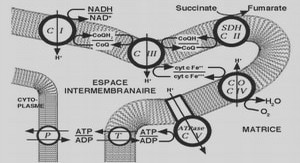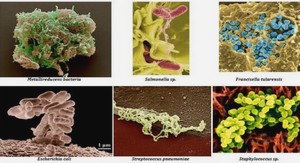Bryophytes are a haploid dominant plant group that includes mosses, liverworts, and hornworts. Evolutionarily, they are the first land invaders and their species diversity is second only to that of flowering plants (Shaw et al, 2011). Ecologically, they influence many ecosystem processes such as microclimate variation, nutrient cycling, soil erosion, and tree growth/stand productivity (Turetsky, 2003; Glime, 2007; Fenton et al, 2010). Bryophytes are of particular importance in the vast boreal forests, where their biomass is dominant in some forest types (Qian et al, 1998; Fenton et al, 2010; Turetsky et al, 2010).
Bryophytes disperse through sexual spores and asexual propagules such as gemmae. Historically, it has been assumed that only a few bryophyte species disperse more than a few meters from the source colony (Szövényi et al., 2012), although the spores of most species are wind dispersed (Longton, 1997; Maciel-Silva and Pôrto, 2014). Vegetative propagules such as gemmae have less dispersal capacity, and their dispersal is generally believed to be limited to a few centimeters or meters around the parent colony (Glime and Bisang, 2014; Szövényi et al., 2012). As their propagules are believed to travel only short distances, bryophytes have been assumed to have distance dependant dispersal, i.e., the genetic relatedness of populations should decrease with increasing distance between them (Sundberg, 2005). Although, some studies confirm this limited dispersal capacity of bryophyte propagules (Szövényi et al., 2012), other studies report long-distance dispersal in bryophytes that is independent of distance from the source population (Barbé et al, 2016; Lönnell et al., 2014; Sundberg, 2013; Zanatta et al., 2020).
Bryophyte population genetics and factors influencing genetic variation
A population can be defined as potentially interbreeding individuals of the same species which live within a restricted geographical area (Freeland et al., 2011). Therefore, studying genetic variations of plant populations is simply defined as plant population genetics (Waits and Storfer, 2016). Genetic diversity (amount of genetic variation) and genetic structure (distribution of genetic variation) are the two main variables studied under plant population genetics. They are primarily influenced by biological factors (mutation, selection, genetic drift, and gene flow) and geographic factors (Waits and Storfer, 2016).
Biological factors
Movement of genes within and among populations via mating and dispersal can be simply defined as gene flow. High gene flow rates homogenize allele frequencies in populations and inversely low gene flow rates produce population isolation and high genetic inter-population variation (Waits and Storfer, 2016). In bryophytes, it is observed that gene flow rates are high for most species, despite their theoretically limited dispersal capacity, resulting in relatively low genetic variation among populations (Hutsemekers et al., 2008). For example, Cronberg et al. (1997) observed low among-population genetic variation (GST = 0.073) in Hylocomium splendens at different geographic scales in Scandinavia, which demonstrates high gene flow rates of some bryophytes across the landscape.
Genetic drift is the random change in allele frequency between generations (Freeland et al, 2011). When the effective (breeding) population size declines, there is frequently a rapid decrease in genetic diversity due to genetic drift (Waits and Storfer, 2016). In the absence of selection, this effect can result in the fixation or extinction of alleles within a short period (Freeland et al., 2011). This effect predominantly influences small populations because low-frequency alleles can be easily lost between generations for random reasons (Waits and Storfer, 2016). Despite this, Pohjamo et al., (2008) found that population size did not influence the genetic diversity of the liverwort Trichocolea tomentella, which supports the fact that genetic drift in bryophytes may be low despite the fact that some populations are relatively small.
Inbreeding generally occurs when the individuals of the population are genetically closely related. So, inbreeding reduces genetic variation, which in turn influences genetic drift (Freeland et al, 2011). It is said that the level of inbreeding is one of the main reasons for low genetic variation among individuals of colonies of bryophytes because, in addition to selfing in unisexual species, asexual reproduction also results in inbreeding in bryophytes (Stenøien and Såstad, 2001). Therefore, it would be expected that genetic variation is lower in bisexual (monoecious) species of bryophytes. According to Vanderpoorten and Goffinet (2009), around 60% of mosses and 70% of liverworts are dioicous (unisexual). However, empirical tests using haploid genetic data of bryophytes do not support lower genetic variation in bisexual species than in unisexual species (Stenøien and Såstad, 2001). This may be explained by the fact that most dioicous bryophytes do not reproduce sexually because of the failure of swimming sperm to find female plants, therefore reducing their advantage (Vanderpoorten and Goffinet, 2009).
Genetic recombination during sexual reproduction is one of the main factors that influence the genetic variation, but not all bryophyte species have been shown to reproduce sexually. For example, only 50% of species in Great Britain regularly produce sporophytes (Paton, 1999), and worldwide 4% of bryophytes have never been recorded with sporophytes (Frey and Kürschner, 2011). That means the regular reproduction method of many bryophyte species is vegetative reproduction, which may lead to lower genetic variation of the species. As an example, Pfeiffer et al., (2006) observed low within population genetic diversity in vegetatively reproducing moss Rhytidium rugosum.
Geographic factors
Isolation by distance and habitat fragmentation are described as the main geographic factors influencing the genetic variation of populations by increasing the possibility of breeding among genetically close individuals (Zartman et al., 2006). Isolation by distance is the correlation between genetic variation and geographic distance of populations, which is mainly influenced by landscape restrictions for dispersal (Slatkin, 1993). As an example, Snäll et al., (2004) observed that in two epiphytic bryophyte species, Orthotrichum speciosum and O. obtusifolium, genetic variation is high among individual populations separated by only 350 m, suggesting isolation by distance at small geographic scales. However, in study of, Kyrkjeeide et al., (2016a), observed extensive gene flow in a few Sphagnum species in the northern hemisphere, supporting the fact that oceans act as weak barriers against gene flow and isolation by distance at greater distances are low in bryophytes.
High levels of habitat fragmentation (loss of habitat due to the division of continuous areas into smaller areas (Didham, 2010) increase the distances among populations and act as a dispersal barrier leading to the reduction of gene flow and an increased influence of genetic drift by reducing the sizes of populations (Zartman et al., 2006). For example, Wilson and Provan (2003) found that within-population genetic variation in Polytrichum commune in fragmented peat bogs was lower than in large nonfragmented bogs in Northern Ireland, suggesting restricted gene flow. On the other hand, Zartman et al. (2006) showed that the genetic diversity of Radula flaccida was not affected by habitat fragmentation, suggesting that dispersal capacity had a greater influence on genetic variation than fragmentation.
|
Table des matières CHAPTER I GENERAL INTRODUCTION |




